Pipe dreams: Taking stock of Hedi Boys, skinny jeans and the swing of cool
There's a (designer) rip in time and it looks like Tāmaki Makaurau in the early 2000s.
Crust is a weekly newsletter on taste and culture from Tāmaki Makaurau.
Hello darlings, remember Dior Homme denim, Zambesi Ramones, Lee Supatubes and Levi’s Tough Skinny jeans? We’re looking back at all of them today (and more).
Walking through the city last week, I rounded the corner and came upon a time warp, a brood of young men, all legs and long hair. The jeans were slim, strikingly so, and atop at least two of them were gauzily worn-out T-shirts — nonchalant to the point of evaporation — in slouchy Breton-y stripes. It was cause enough for a double-take. I hadn’t seen a silhouette like that in the wild, worn with such intention, in years. It’s there in music too, in the artwork for Elliot & Vincent’s (great) single Piggyback, skinny black jeans.
Amidst the sea of big denim and baggy trousers, the effect is a knife through the style paradigm. And that’s the point, no pun intended. “Cool! And! New!” is antithetical, defining itself in opposition to the proverbial conventions. Reviving something definitely “out” is a cheat code for cool. To “get it” — baker boy caps, toe shoes, whatever — the viewer needs to understand the references and social capital at play. It’s classic trend pendulum stuff, or rather a four-quadrant matrix with a wandering axis.
Skinny jeans, once so hot they earned health warnings (nerve damage), have been slowly falling out of favour for the past decade, and fashion media won’t let you forget it. As with most cultural behaviour, change was slow and then sudden; everywhere, all at once, pants were big across the board. It doesn’t take a divining wand or a salaried trend forecaster to know what happens next. It was inevitable, really, that anyone seeking differentiation or a sense of change would pick up an adversarial silhouette, associated with one name above all: Hedi Slimane.
The Dior Homme collection he showed in 2001 continued the slim silhouette he’d debuted for Yves Saint Laurent Rive Gauche in 2000, and it would get thinner and thinner, picking up speed from 2003 and rattling everything. Those famous Dior Homme jeans were made in Japan and went for US$400. They were cut a size down, and leg openings were listed, measurements of 17mm and 19mm. (Fashion legend goes that fitting into a pair was a requirement of casting calls.)
It would, eventually, lead to a seismic shift — everywhere, all at once — in how people dressed, revealing the bodily form within. Associated with hedonism and deviance, religious leaders of all creeds tried to ban them.
We’re two decades on from that, so it tracks that it’s coming back around again. I’ve been contemplating the “when” of it for a few years. Is it here? The latest revival yes, according to the taxonomy of social media trend-watching. It’s the Hedi Boy.
He’s most likely in monochrome, and he looks cool. The jeans are low, tight and dark, visibly belted thanks to a teeny little jacket. Dior Homme denim is the holy grail (I think Jonathan Anderson should, and will, restore that line name), and the fashion press has spent the past month racing to explain it all, while content creator Emma Winder valiantly hunts down acolytes in the wild and Karsten Kroening breaks it down on YouTube.
Of course, Hedi sent rail-thin models dressed in skinny pants down the runway again, during his tenures at Saint Laurent and Celine. And the womenswear radar went off again last August, with Miuccia slipping some low, tight denim into the fall-winter Miu Miu collection. Diesel is doing them too, so is Acne.
I want to take a pause to talk terminology for a moment. Slim denim colloquially falls under the umbrella of “skinny jeans”, but the name only really came into parlance in the early 2000s, thanks to breathless media reporting on the shrinking pants of celebrities like Kate Moss, Amy Winehouse, Mischa Barton and Nicole Richie.
Levi’s released its Tough Skinny in heavy, dark denim in 2003 — and a collaboration with Lover (!!!) in 2006 — but before the early aughts the cut was referred to, relatively interchangeably, as drainpipe or stovepipe. The best versions were as slim as you could squeeze into but, critically, not tapered at the ankle. And there was a smugness woven into 100% cotton (Elastane and Lycra were cheating).
The old terms are still used in some quarters. Stovepipe now, confusingly, appears to commonly refer to a looser straight cut, often presented as an alternative to barrel jeans, and Google elicits SEO-farm articles illustrated with images of jeans that certainly aren’t stovepipes. Globally, search interest in “skinny jeans” peaked in 2009 (“drainpipe jeans” spiked in 2005), but in New Zealand it didn’t top out until 2012.
Hypothesising the revival has been a point of discussion in our house, and my husband Vinnie posited that the first wave of the return would see intentionally ill-fitting jeans, aping a look caused by the constraints to access of those early years. You couldn’t buy them new — not here, not in the very early 2000s. He would buy women’s jeans, usually secondhand.
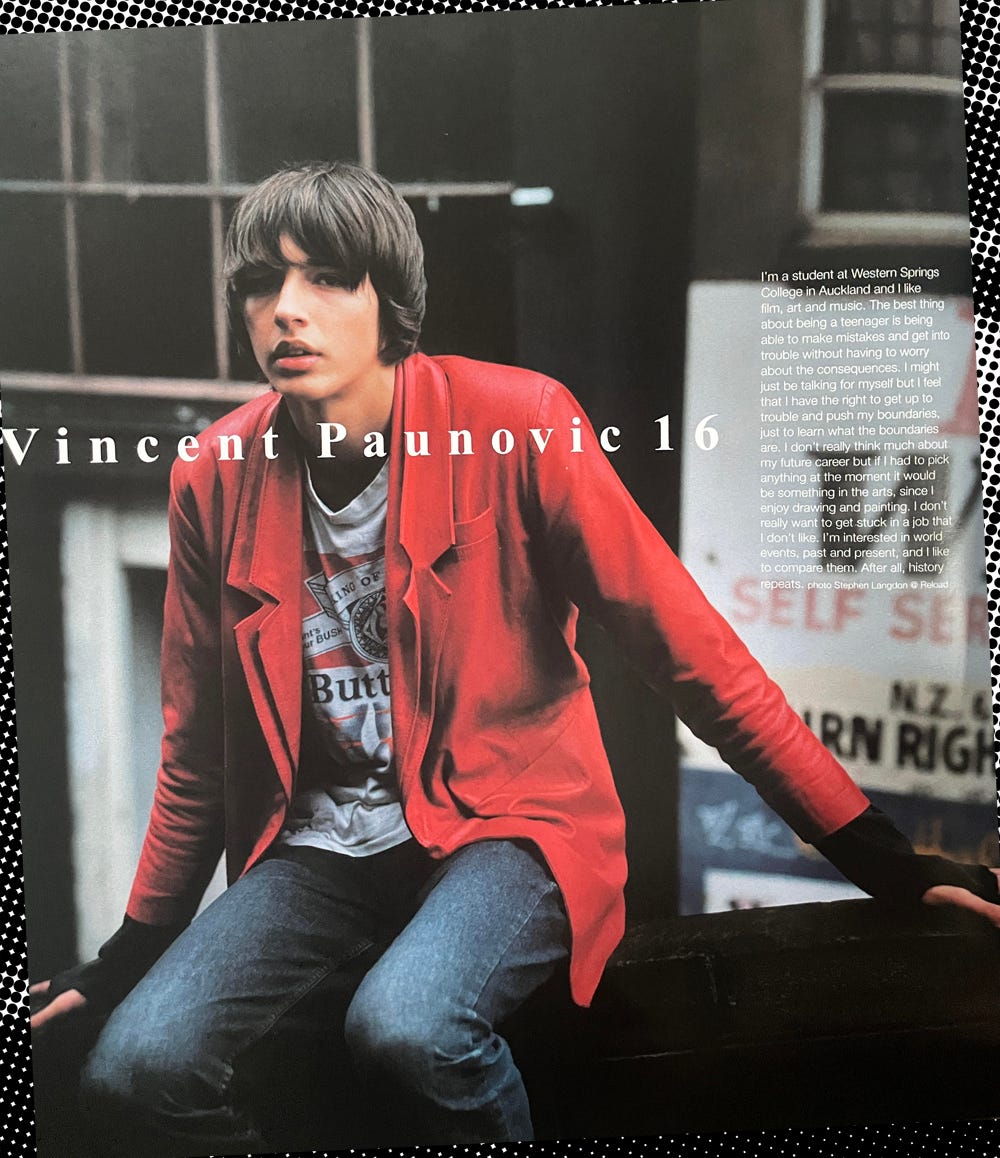
Jeans were tight and so were leather jackets. He was an early adopter — you know what Western Springs College kids are like — and had never heard of Hedi but wanted to dress like The Ramones. (They wore Levi’s 505s, with the legs taken in).
Everyone else did too. The Strokes, a privately educated facsimile, released their debut album in 2001 and another in 2003, when they were photographed sprawling and skinny on the roof of the Chelsea Hotel.
Zambesi named their skinny denim jeans the Ramones, and they were “a big hit in the summer of 2004”, coveted by cool Aucklanders with some cash to spend. The brand’s seminal 2005 St James show was soundtracked by Pluto playing live. They were dressed in tight trousers and The Herald likened them to Babyshambles.
It was peak Pete Doherty; he and Kate Moss, skinny legs trudging through the mud and stumbling on curbs. Alison Mosshart, MIA, Danny Brown and MGMT, doe-legged It Girls like Agyness Deyn and Alexa Chung.
Trends moved slower then. The ripple effect in Auckland hit later in the deep East than in other suburbs; by all accounts, the inner city saw them early. They weren’t easy to come by at first — catalogued and explained by @indiesleaze — making them a badge of honour due to friction and scarcity.
With the mainstream dominance of loose denim preceding them, drainpipes were countercultural and subcultural — worn by indies, emos, scene kids — and tight jeans had long been associated with the queer community (where denim had a history as a canvas for self-expression) as both subtle in-group signifiers at a time when they were needed, and fodder for judgment from outsiders, when “gay” was pejorative.
I still remember the first time a boy wore skinny jeans to school. It what was then still called Mufti Day — and required a gold coin donation — and if memory serves, they were Lee singular Black Stovepipes. (What happened to Lee? You never hear about them anymore.)
By 2005, the brand’s limited-edition Supa-tubes were everything and came in gastronomical shades like Sour Grape Kiwi Delight, Banana Blitz (I had those) and Raspberry Ripple. So were Tsubi jeans, back when the brand was still Tsubi, and, for private school girls and their trendy mums, Sass and Bide, which Sydney lads reportedly wore too. (To make sure people knew what you were wearing you could leave the telltale blue, white and red tag on).
Digging around for memories, I asked Dan Ahwa if he wore skinny jeans. “I worked at Myhart of course,” he messaged back, immediately. “Marjan Pejowski leather jacket and skinny B Store jeans like wtf.”
Myhart (so cool) was located on Lorne Street, and over on High Street, Workshop was selling some very good skinnies — dark, rigid and unforgiving, plus some with stretch. I had some of the former, and a pair from Stolen Girlfriends Club, who traded in hot, tight, ripped denim. They went well with a sticky teapot cocktail.
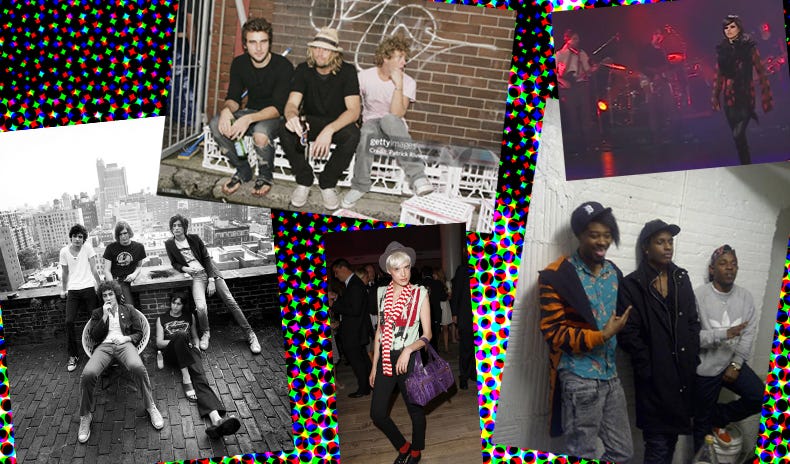
In Tāmaki Makaurau skinny jeans were also categorically skux, part of the look of “a pūkuna-eyes-wide-fuck-you to the white, heteronormative and manly stylistic norms of Canterbury pants, gumboots and Swanndris” subculture, analysed definitively by Tayi Tibble in a Voyager-worthy piece of journalism for The Pantograph Punch in 2019. “Clothing included the skinniest skinny jeans they could get into. Women’s jeans generally had a wider range of colours.”
And squeeze in people did. Once in the public consciousness, skinny jeans were fertile grounds for satire, with The Mighty Boosh and Kath and Kim both pointing out that a certain shape was necessary to fit them.
There’s nowhere to hide and an underlying austerity to the whole thing; skinny jeans are the opposite of abundance. They demand (silently) thinness. And with a new cohort legging it around in tiny jeans, @brit_cult pointed out the sacrifices that some of the old guard made. “We know now that a lot of the people who wore this first time weren’t healthy at all.”
In 1996’s Trainspotting, costume designer Rachael Fleming put junkie-thin Renton in a pair of women’s 51 States Jeans (Ewan Bremner has credited her with inventing skinny denim) and she’s since said that after five years of baggy raver clothes, by the time the film came out people were ready for a new silhouette.
I won’t spend word count getting into the weeds about the return of the thin ideal (everyone’s done that, comprehensively so, already) but I do think it’s interesting that a thinner silhouette is happening concurrently with protein-fueled gym physiques, surfacing amidst a time when “health”, particularly the appearance of it, is so valorised. Amidst that landscape, which exists both on and offline, what could be more reactionary than skinny jeans and nicotine? (I haven’t seen “waif” in a headline for a long time, nor “size zero”, but sense we will soon.)
Coolness defines itself in opposition to something else. The concept of cool, and the cultivation of it, has been bumping into me the past week, in TikToks and newsletters and private conversations. There’s a growing preoccupation with what’s cool and who gets to decide — a result of, I think, a cultural shift away from optimism and acceptance of all flavours and tastes (and Millennial panic). Cultivating it is now being called “aura farming”, but it’s nothing new.
Blackbird Spyplane’s Jonah Weiner diagnosed “a pronounced longing and affection among many Current Coolness Observers and other ‘tastemakers’ these days, for an endangered species: The Blue-Chip Culture Stock”, underpinned by class iconography and traditional gatekeeping. WASPy romanticism.
Synonymical trends like “Quiet Luxury”, “Old Money”, “Stealth Wealth” and “Hamptons Core” et al should, I think, be viewed as contemporary cargo cult; ritualised behaviours repeated in the hope of provision and delivery. I also think their popularity is a reaction to the punji pit of cultural appropriation, a safe retreat into the assorted class conventions of the Anglosphere.
With “Old Money”, the context and subtext go largely unacknowledged, making the reality of socio-aesthetic stratification more implicit. As we saw in Saltburn, The Secret History and Brideshead Revisited before them, the only thing worse than being an outsider is being an interloper and a liar. As with any guarded scene, there are rules (The Preppy Handbook broke ground because it laid bare the subtle rules used for the appraisal of belonging), and not saying something out loud is very WASPy.
But then again, maybe that’s a return to tradition too. Before prescriptive media, explanatory style content and forecasting dictates, style authorities were found in our proverbial village. And our surroundings still impact how we dress. More than anything you see online, you feel the waters around you, the warm currents and the riptides.
I’ve been “off” jeans for a while, only really wearing my Levi’s Engineered pair, though hunting for some old Diesels on eBay. (My pants rotation consists of office-chair-grey vintage trousers and a slim brown wool bootcut from Penny Sage). The subject of this week’s newsletter necessitated a return to the “archive”, so I pulled my old, acid-wash Karen Walker skinny jeans out of the cupboard, bought nearly 20 years ago, slipping into a past self and time long gone. Buzzy feeling eh.
Everything’s cyclical. We repeat the rituals and uniforms. Wait a while and eventually, the photocopier spits them out again — resolution shifted details softened, paper stock different — and what’s in our hands feels like the original. Sort of.
Watching… the latest instalment in the Nicholas Cage renaissance, The Surfer. I loved it, but it’s best to go in blind. So what I will say is that it captures the desperate romanticism of middle age and the horrors of masculinity, served up in a salt-rimmed cocktail of class, surf cults and ego death. There’s environmental horror as much as social — two genres Australian cinema does so well — and I was impressed that an Irish director could nail the drop in. (My date Jena grew up in Raglan and gives the movie 10/10). It’s in select cinemas now.
Loving… that the brilliant Allyssa Verner-Pula is back on the mic with a new podcast, Allyssa Unabridged. The first episode looks at the specificity of growing up in Auckland, coming of age and holding grief for past selves (not the only time I’ve heard this sentiment this week). She touches on the complex of coolness too.
Recommending… J.L. Carr’s beautiful little novella A Month in The Country for Ensemble’s winter reading list.
Layering… everything, which seems like the best approach to Tāmaki’s current weather. It’s not a new idea of course (little this week is) as this look from Workshop’s 2003 New Zealand Fashion Week show demonstrates. If you’d told me this outfit was plucked from Elam last month, I’d believe you.
Steaming… with frustration upon realising I had bought the “very thin” Vogels instead of “toast”. My bread proclivities sit on the thicker side of slicing conventions, and I’m curious what purpose such a thin cut serves. Any devotees reading this are encouraged to make their case in the comments.
Talking… to Auckland Art Gallery Toi o Tāmaki senior curator Dr Sophie Matthiesson about their big new show.
Streaming… Overcompensating (on Zoe Walker Ahwa’s recommendation).
Rachel Mills and Dominique Healy are opening for a Second Hand Sunday on June 8th from 11am to 3pm, merchandising their current ranges with a selection of vintage pieces? It’s a novel idea.
42% of Pinterest users are Gen Z?
F.O.L.A [Auckland], a festival by the “misfits, punks and menaces” of Tāmaki Makaurau, is happening at Basement Theatre from June 11th to the 15th?
The Met’s Oceania galleries have been reopened? A cohort of Kiwis was there for the occasion.
Liz Mitchell’s holding an introductory weaving workshop at Grey Lynn Community Centre (cool!) on Monday from 10am to 4pm? Book here.
The Empire State Building’s likeness is trademarked and “money-making businesses” have to pay to use its image?
Enjoyed this? Like what I do? Why not become a paid subscriber, a monthly subscription is cheaper than two loaves of Vogels. If you’re already a subscriber, you can upgrade to paid via the browser version of Substack (not to mention Apple takes 30% commission on in-app purchases including subscriptions).





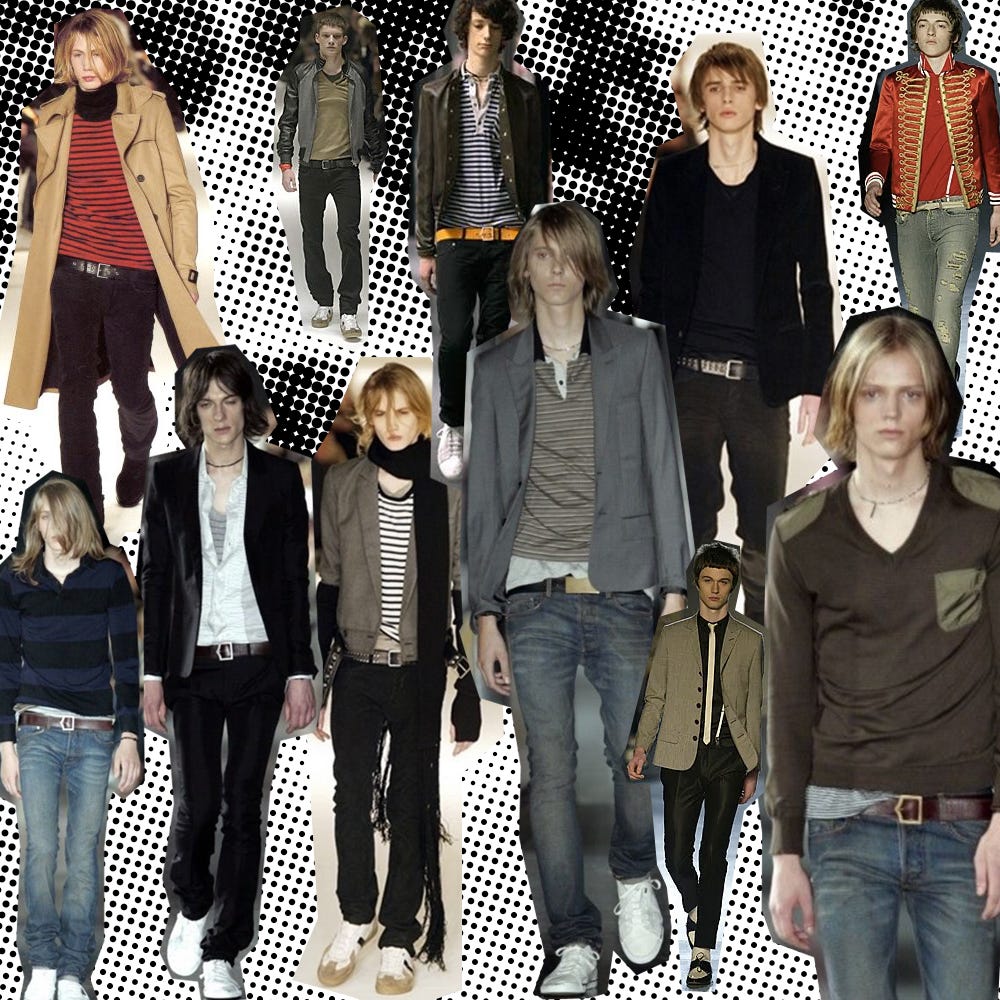

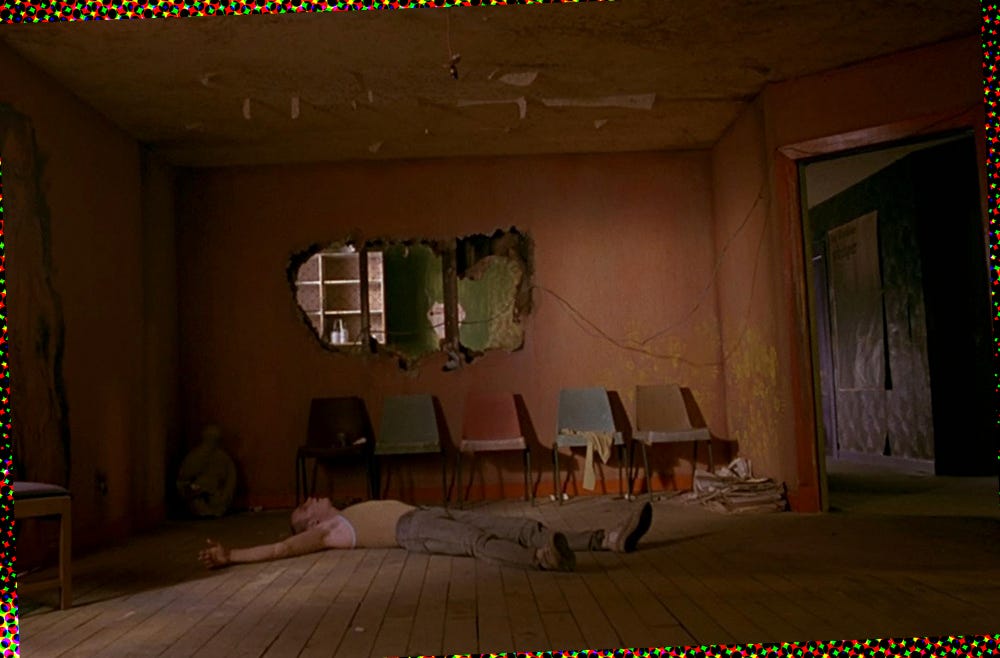

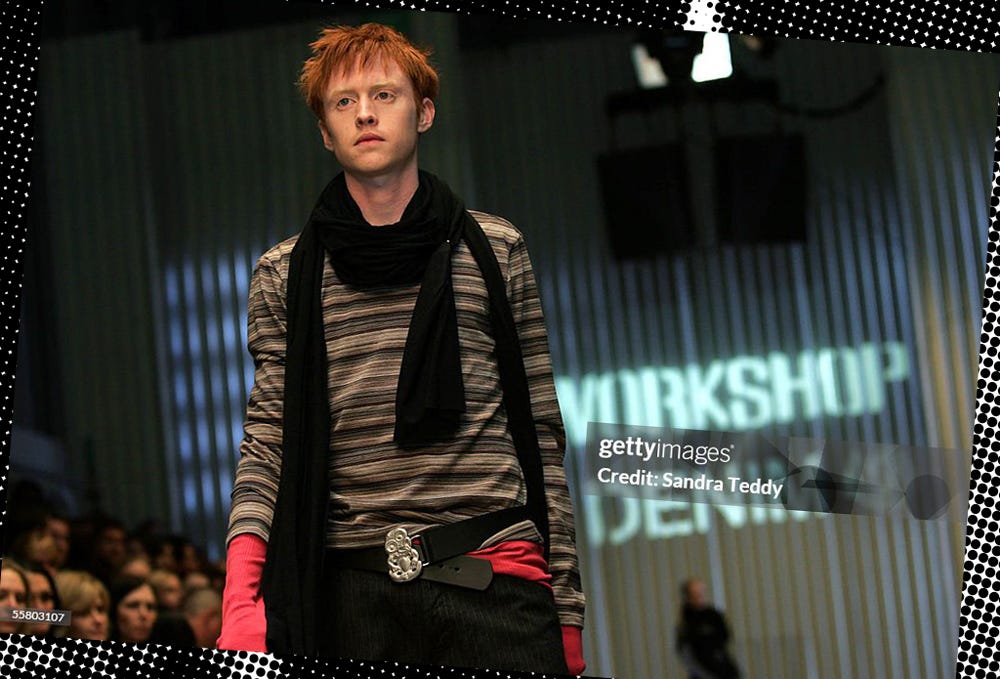

Ohhh Very Thin Vogels is all about the contrast! Gotta pair the hot and crispy toast (almost a cracker!) with something soft and cool: tomato or avocado always good, mashed banana sprinkled with cinnamon if you’re sweet, a smushed boiled egg from the fridge (boiled last night just for this ofc) with some Tapatio, or my special childhood favourite (from when they sold Vogels in slice-your-own bricks!) which is leftover mashed potatoes with heaps of pepper.
I grew up in the west where Black stovepipes have forever been and will forever be in fashion.